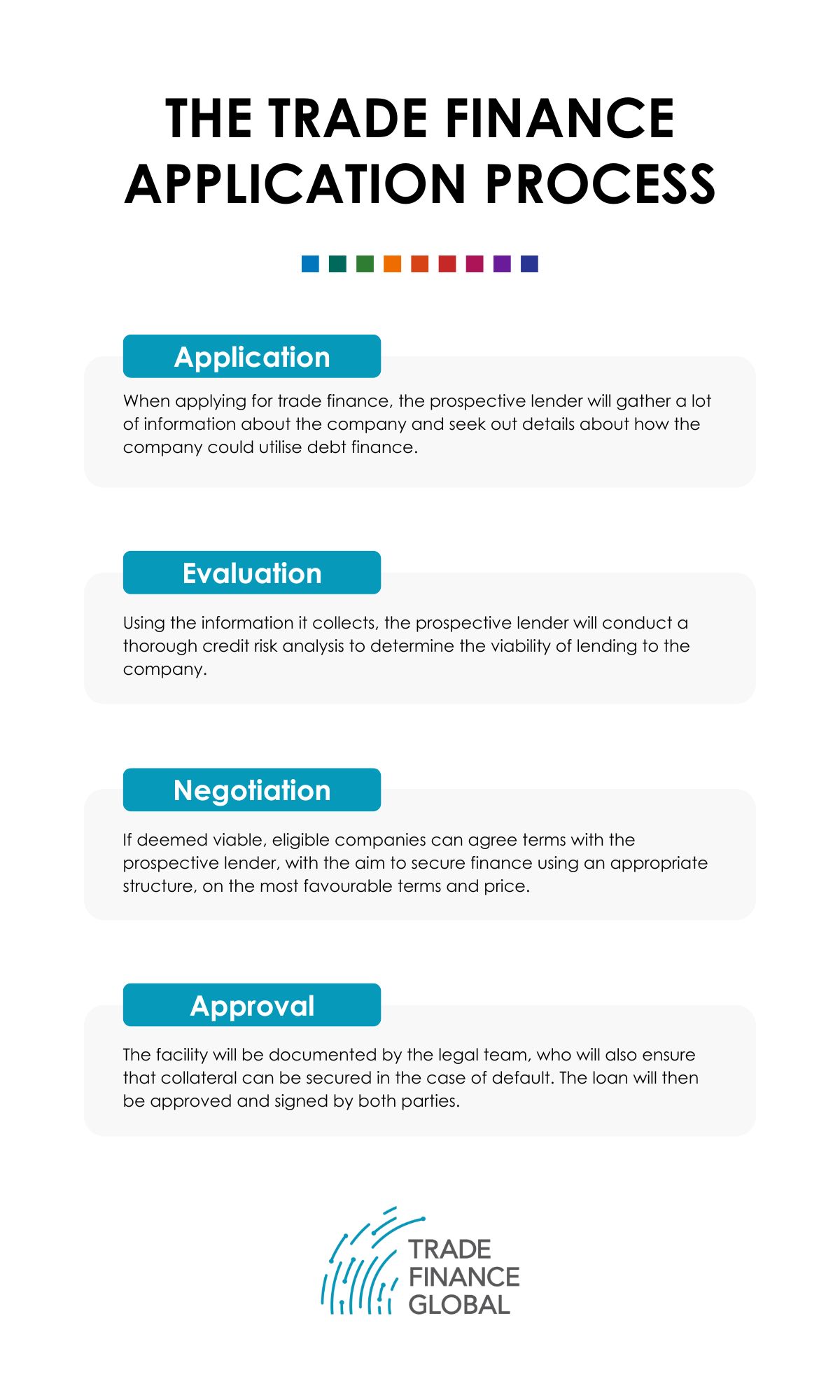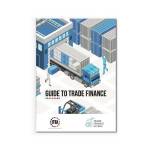The Process of Securing Trade Finance and Loans | 2025 Trade Finance Guide

This content was produced in conjunction with ITFA.
Access trade, receivables and supply chain finance
We assist companies to access trade and receivables finance through our relationships with 270+ banks, funds and alternative finance houses.
Get StartedContents
Each lender has specific requirements and criteria which must be addressed before funds can be advanced to a business and some lenders are more risk-averse than others.
The lender type (bank vs non-bank, large vs small) and their risk appetite will also determine the interest rate that is charged to a business and the repayment conditions.
There is a clear process when applying for a loan or other trade facility.

What is the process to secure trade finance for my business?
While the exact requirements can vary based on the subtle nuances of every situation, there are generally four main stages in the trade finance application process: application, evaluation, negotiation, and approval.
1. Application
The process starts when the business submits a credit application to the lender.
When applying for trade finance, the lender will ask for a set of information on the company, the individuals involved (such as the directors), and details on why the business is seeking debt finance.
Trade finance is typically most suitable for businesses that are already trading either domestically or cross-border so most lenders will expect to see some form of track record showing trading revenues on past transactions.
Some of the most common items lenders will require in an application are:
- 2-5 years of financial statements (e.g. profit and loss statement, balance sheet, cash flow statement) and, if available, management accounts, creditors ledger, debtors ledger, and stock ledger.
- Budgets and forecasts for at least the next year
- Details of any assets that the business or its directors own (e.g. property, equipment, invoices, etc) that could be used as collateral
- Details of any liabilities (e.g. loans, overdraft facilities, etc)
- Description of trade cycles
- Current purchase orders
- Current invoices from suppliers or clients
Other items may include:
- A curriculum vitae (CV) or resume for each of the directors
- References from banks
- Information on related companies (e.g. group companies, suppliers, buyers, etc)
Generally, a business plan with financial forecasts is essential to show to a banker that your business idea is sound and realistic, that you can implement it successfully, and that you know what the finance will be used for.
Business plans do vary in format, but usually include:
- A thorough introduction to the business, including a future vision and the goals of the business and any significant accomplishments to date
- Information on the key stakeholders and directors including past experience and equity composition of the company
- Introduction and an analysis of the product or service offered
- Overview of the sector and competitive landscape
- Summary of anticipated results, including financial forecasts
2. Evaluation
The lender will undertake a full credit risk assessment of the documents that it receives.
The credit analysis will usually involve inputting figures from the applicant’s income statement, balance sheet, and cash flow documents.
The analysis will also consider the quality and quantity of the collateral the business can provide and the status of suppliers, customers, and trade cycles.
The evaluation process will normally involve some kind of credit scoring, taking into account any vulnerabilities such as the market the business is entering, the probability of default, and the quality of management.
A credit score is normally ranked from AAA (very low risk of default) to D (likely to result in the denial of a loan application).
What does a lender look at to determine an applicant’s credit?
Lenders will generally examine several key qualitative and quantitative metrics including:
- Key financial information
- Management and directors’ credentials
- Operating market and sector
- Risk of the transaction
- Analysis of the collateral
3. Negotiation
Eligible businesses applying for trade finance can negotiate terms with lenders, which is a critical step given that a business’s aim with a lender is to secure finance on the most favourable terms and price.
Some of the terms that can be negotiated include non-interest costs, fees, fixed charges, and interest rates.
If you’re prepared and understand the structure of fees and charges, it can help you negotiate terms that are in your favour.
Sometimes it may be a good idea to seek advice from your local trade body to avoid risks and understand the charges and the structure of the loan and insurance.
4. Approval
If everything goes well, the next stage in the process will be the approval.
Typically, the account officer who initially deals with the applicant and collects all of the documentation will do an initial credit and risk analysis.
This then goes to a specific committee or the next level of credit authority for approval.
If the loan is agreed upon (on a preliminary basis) it goes to the legal team to ensure that collateral can be secured and to mitigate any risks in the case of default.
A senior director at the bank will also need to sign the loan documents.
The loan document is a legally signed contract from both parties that consists of definitions and a full description of the finance facility that has been agreed upon (e.g. amount, duration, interest rates, currency, and payment terms – both interest and non-interest charges).
The conditions of a loan will also be included, which will state any obligations of the buyer and the lender, as well as what would happen in the case of any disputes or a default.
Repaying the loans once approved
To maintain a good relationship with any lender, the business must make debt repayments (including interest) in a timely manner, according to its contractual and legal obligations.
This should also protect the business’s credit rating.
Establishing and maintaining a good reputation as a borrower is key to accessing further funding and larger facilities, as the business grows and trade volumes increase.
Our trade finance partners
- Invoice Finance Resources
- All Invoice Finance Topics
- Podcasts
- Videos
- Conferences




















